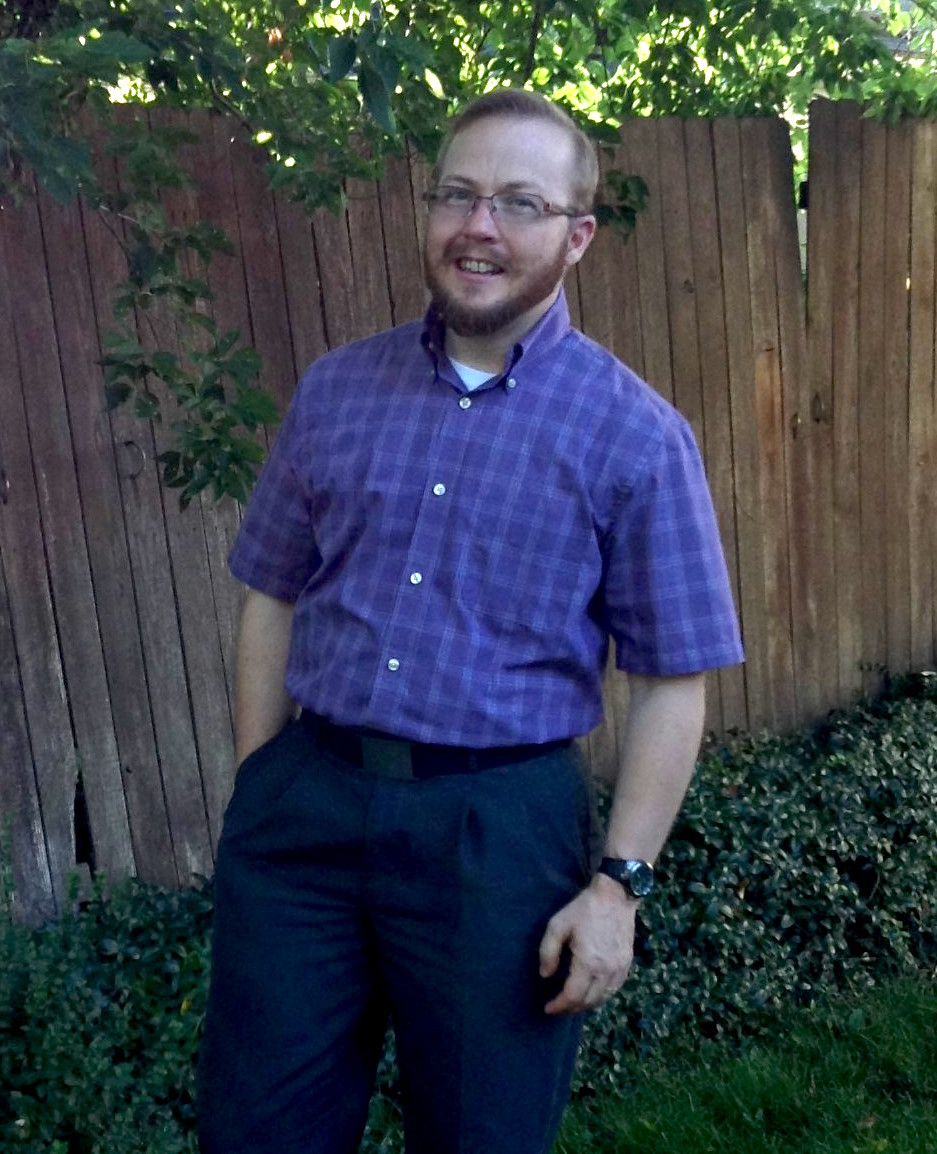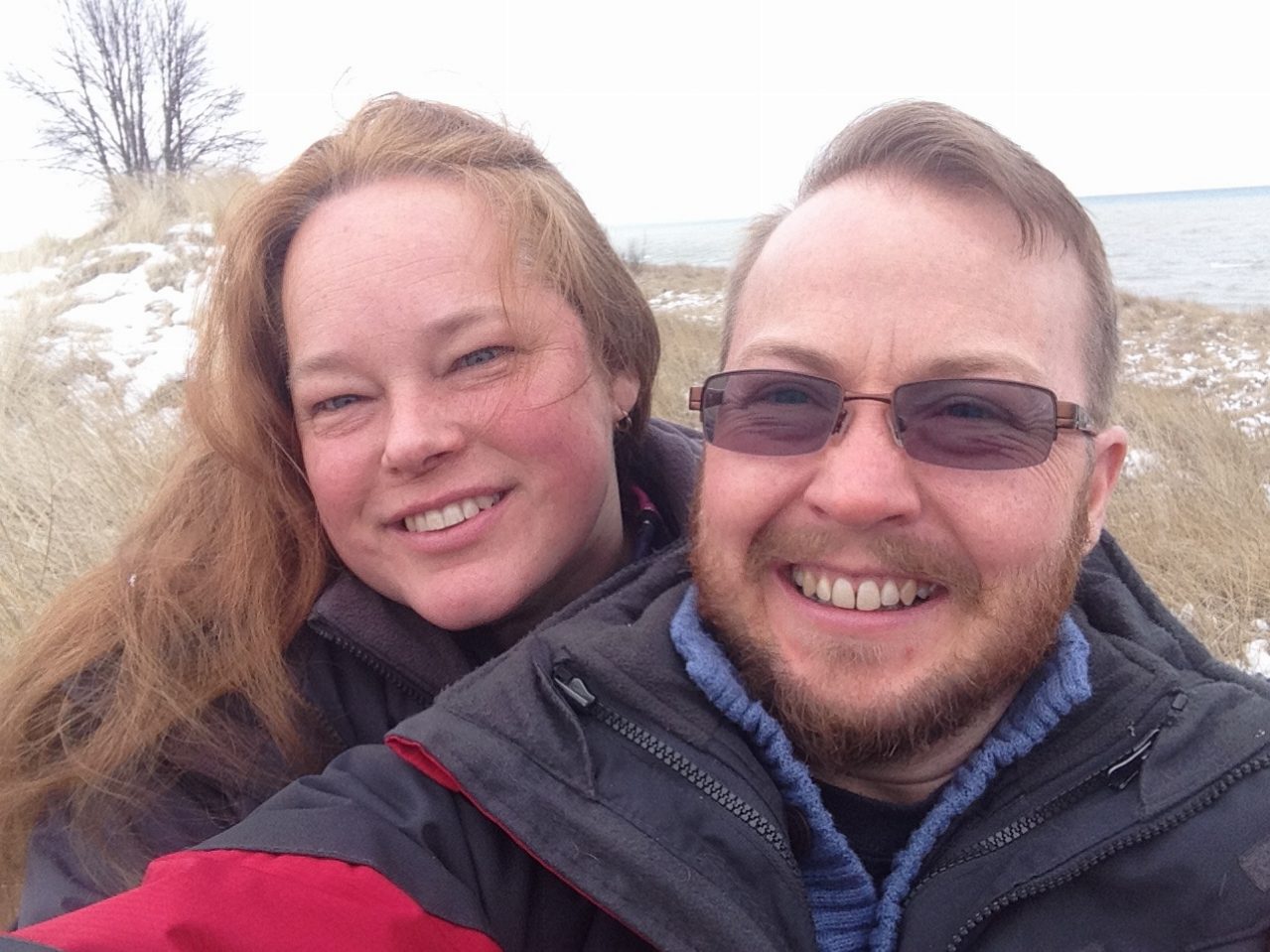After decades of living as the Mormon Church, his family and society expected him to, this transgender man is finally living his truth.
This is part of a story series about the lives of transgender people. Read the introduction here.
 Seth Carwyn grew up Mormon, living under the strict rules of the faith that were followed by his family. He adhered to the religion’s tenets into adulthood, but there was something that kept nagging at him — something he didn’t know how to reconcile.
Seth Carwyn grew up Mormon, living under the strict rules of the faith that were followed by his family. He adhered to the religion’s tenets into adulthood, but there was something that kept nagging at him — something he didn’t know how to reconcile.
As early as the age of two, Seth knew he identified as male, even though he was assigned female at birth.
I always identified with my father. I always thought I’d grow up to be like him. So it was very confusing for me when my mother said I was a girl like she and my younger sister were. I’m sure she said something about our bodies being different from my dad’s, but all I knew was looking at my dad I felt like my dad, not my mom and my sister.
At the age of three or four, Seth saw the reality for himself, when he got out of bed one night asking for a drink of water. He peeked into his parents’ bedroom and saw his dad naked for the first time.
“That’s when the light bulb went off — ‘That’s what my mom means,’” he says. “I remember going back down the hall, climbing into bed and feeling confused and angry that my mom was right. I didn’t feel like a girl. I couldn’t see myself growing up to be my mom or my sister.”
In response, Seth became a tomboy, which his mother allowed except when he was participating in church activities. There, he had to wear a dress and be “a good little Mormon girl,” as he puts it.
That’s the space I occupied until I hit adolescence. My mom and I would constantly battle over the length of my hair. I’d beg her to cut it short and she would, but then she’d make me grow it out. I loved it when it was short because I’d get mistaken for a boy. I always had a quiet satisfaction every time I was mistaken for a boy.
I remember one magical summer when I was around 10 years old. My mom had just had twins and she let us go out and explore. I remember kicking a rock down the road barefoot and I thought, ‘I might have a girl’s body but I have a boy’s brain.’ It was a comforting thing to have an explanation for how I felt.
But that freedom of self-expression came to an end when, as an adolescent, Seth was segregated into the young women’s group, a rite of passage for Mormons. When they turn 12, young people are taught the things they need to know to be either a Mormon woman or a Mormon man, which includes men being the head of the household.
Seth never felt comfortable in the women’s group, especially because he began recognizing his attraction to women — something strictly forbidden by the Mormon Church.
“We were taught about homosexuality and how evil it was, that people who were homosexual were as evil as murderers,” he says. “The Mormon Church was very adamant about sexual purity and fulfilling your role as a Mormon man or Mormon woman.”
The rules have softened somewhat over the years, although homosexuality is still considered a sin if it’s acted on. Mormons who identify as homosexual are required to either practice celibacy or live as a heterosexual, or face discipline including excommunication.
Despite his conflicts, however, Seth identified as Mormon first and American second, he says. He did his best to live up to the expectations of young Mormon women, but he didn’t fit in. As a result, he was bullied in school and became depressed, often getting physically ill at the idea of facing the taunts of his classmates.
When he was 15 years old, his mother took him to see a therapist. But Seth was terrified that everyone would find out the truth about his sexual orientation, and he told the therapist that he was just having trouble adjusting to his new school because he didn’t dress like the other young women and hadn’t made a lot of friends yet.
I realized I could make it all go away if I just conformed. I made a conscious decision that I was going to figure out how to fit in and be the young woman that my classmates and church thought I should be. I never had to go back to the therapist and I was so relieved.
I had my mom take me clothes shopping, I started wearing jewelry and dressing in the ‘80s styles all the other girls were wearing. Once they started to see me more like themselves, the harassment stopped. I made a few close friends and was getting along just fine.
Seth was determined to live up to the expectations his church, his family and society had placed on him. As a Mormon woman, he had two choices: either go on a church mission or get married. He chose the latter, marrying a Mormon man he met in junior college.
“I went on to college in Utah and realized I had probably made a mistake in getting married,” Seth says. “As I learned the history they don’t teach you in church, I started realizing that the Mormon faith wasn’t all I’d been told, and I began questioning my faith.”
Seth was at a crossroads, where he was forced to once again weigh who he is against who others expected him to be.
My husband wanted to live a life where the Mormon Church was the central core of his family, and I couldn’t do that. But I take my vows seriously. I had promised this man and presented myself as a Mormon, and it wasn’t fair to him to change my mind four years into marriage. So I decided I would delve in and live as the Mormon woman I presented myself to be.
It was just me coming to another compromise. I had to change my mindset. The church may not be what it’s cracked up to be, but I felt I had to see through to the end what I signed on for.
The couple moved to Michigan in 1998, and became part of the local Mormon community. Seth was very active in the young women’s program and helped in the primary organization, which is the children’s group within a church.
Then, in 2001, she met a woman named Christine who had moved to Michigan with her husband. The couple became involved in Seth’s church, with Christine serving as the primary pianist and Seth as the chorister.
 “We started working together and having a lot of fun, making it entertaining for the kids while we were teaching them,” Seth says. “That’s when I realized I was falling for her.”
“We started working together and having a lot of fun, making it entertaining for the kids while we were teaching them,” Seth says. “That’s when I realized I was falling for her.”
Seth then faced another major decision. He had been told that if he lived his life as faithfully as possible, the Lord would take away his homosexual attraction. But his deepening feelings for Christine proved that wasn’t the case.
“I was doing everything according to the book,” he says. “I should have been at my moral strong point, but realizing I’d fallen for her made me question whether I was doing my husband — or myself — a service.”
Seth’s attempts to have children had failed, and the couple had started the adoption process. That’s when Seth knew he could not go on, because he didn’t want to bring a child into the situation.
I knew I needed to leave my husband. I didn’t even know if I could be with Christine — if she returned my feelings — and I had no social standing to offer her. But then I realized she returned my feelings and that clinched it.
Seth ended his marriage and left the Mormon Church, and Christine filed for divorce. They began rebuilding their lives together and were married in Canada in 2006. Seth went back to school to get a teaching certification, and it was then that he began to realize that he wasn’t actually a lesbian, but a transgender man.
One of my school assignments was putting together a book list for a minority group of students, and I chose LGBT. At the bookstore, I came on a section on transgender individuals and there was a book of self-portrait photography of a transgender man in the nude — a masculine man with a vagina.
I was astounded and thought, ‘That person looks like I feel.’ The more I started picking up books on transgender people and learning the difference between sexual orientation and gender identity, I realized that this thing plaguing me my entire life was gender identity. I had never felt fully female.
Although he was hesitant to upend their lives again, in late 2007 Seth told Christine what he had discovered about himself. With her full support, the following spring he found a doctor and began hormone replacement therapy.
I came out twice: Once as a lesbian, which for the most part my siblings shrugged at. They were relieved I wasn’t the ‘perfect Mormon’ the eldest child is supposed to be — which I’d been trying to be by living as a woman.
Coming out as transgender was more difficult. For a long time, my mom prayed that I’d come back to living my life by Mormon standards. But about two years after I transitioned, one day instead of calling me ‘Sis’ as she always had, she called me ‘Son.’ She’s making strides. We sometimes forget it takes us years to come to grips with who we are, and it helps to give people the time and space they need to do the same.
What’s more, after Seth started a new job his mother asked if that meant Christine could now stay home with their kids, from Christine’s first marriage. Accepting Seth as the man in the family under the Mormon paradigm was significant.
Especially after living in the shadows for so long — including having an extra-marital affair with Christine, something they both regret deeply — Seth, who turns 45 this year, has made himself a promise to live openly and authentically for the rest of his life.
“I finally feel like I know myself,” he says. “I finally feel like I’ve been given the space to explore who I am without having to second-guess what I’m feeling with what I’m being told by people outside of me. I’m no longer going through the motions. I love my life — I’m confident and calm. I’m able to focus on what I really want out of life and the legacy I want to leave in the world.”
Read all the stories in this series HERE.
[Photos of Seth and Christine Carwyn courtesy of Seth Carwyn.]



